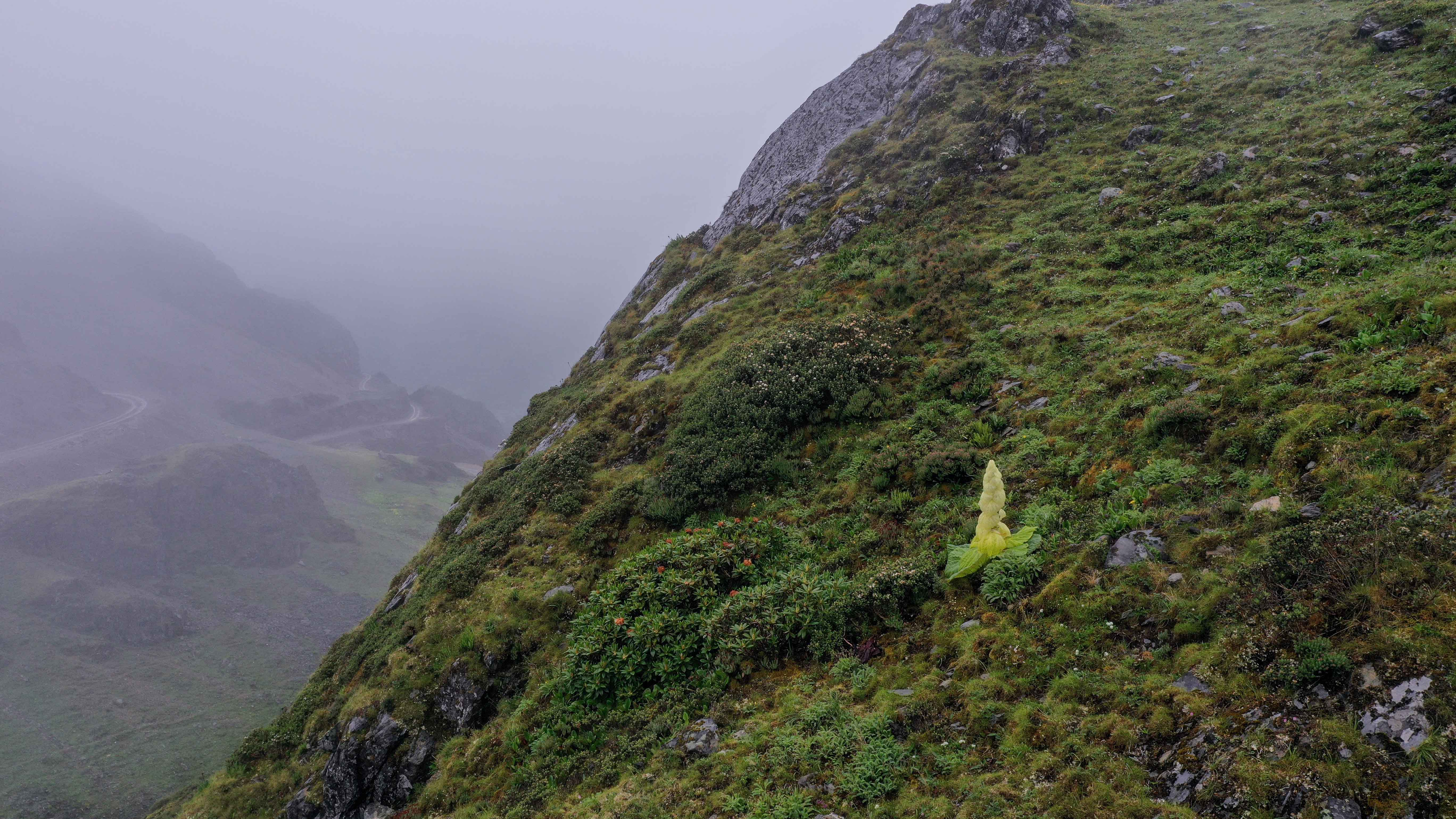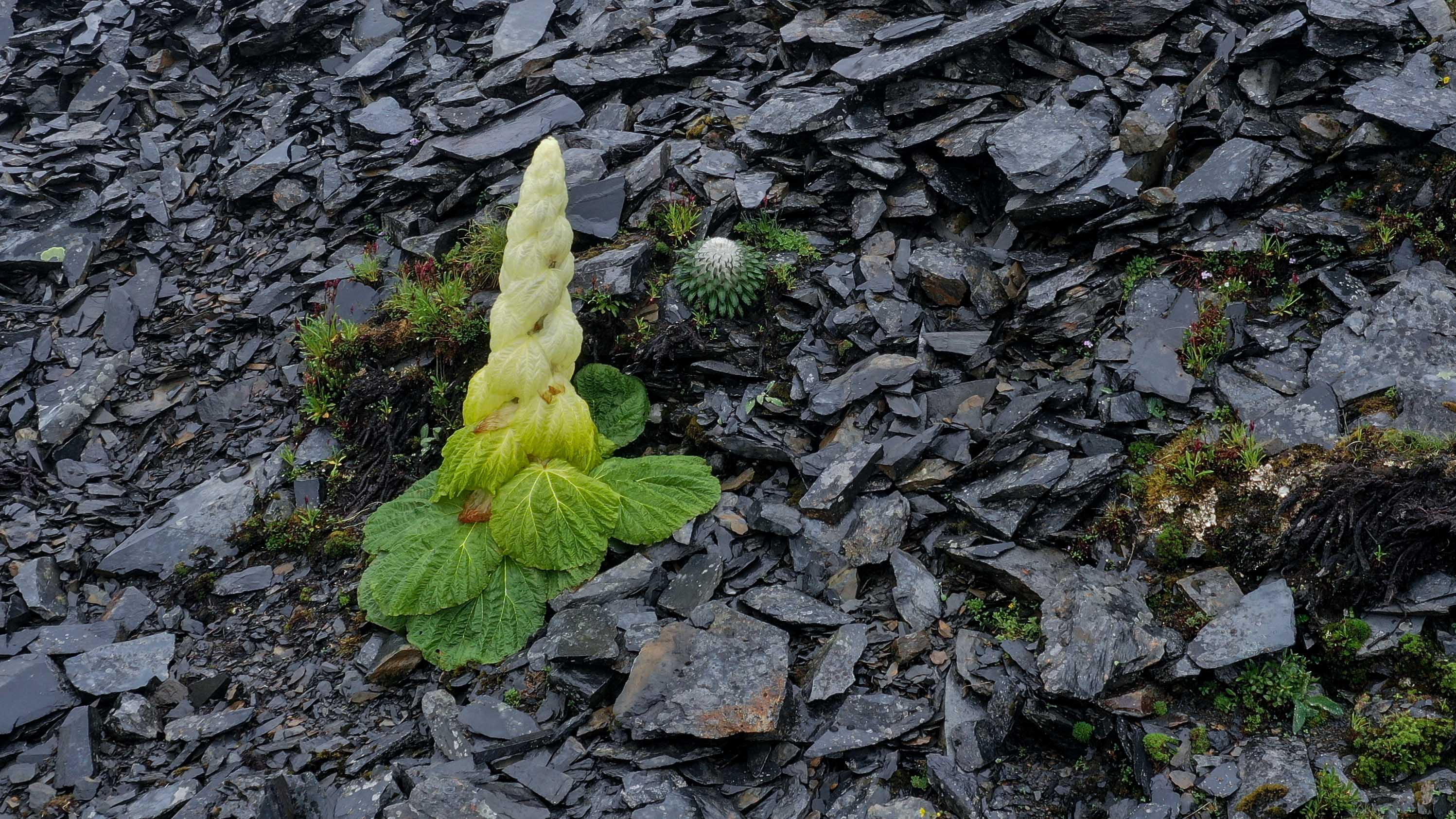
On the high altitude mountain of Shangri-La, SW China's Yunnan Province, a giant alpine plant looks like a pagoda standing above all the shrubs and herbs.
This is Rheum nobile, an extraordinary species of rhubarb native to the Himalaya.

Rheum nobile. /CGTN Photo
Rheum nobile blossoms only once in its life after five to seven years of vegetative growth. It looks like cabbage when young, but its overlapping bracts can grow up to two meters as a straw-colored conical tower.
When the Japanese botanist Hideaki Ohba first saw the plant, he made an assumption that these bracts were evolved for increasing the photosynthetic area, but botanists later did not find any chloroplast in them.

Rheum nobile. /CGTN Photo
So why does Rheum nobile need layers of bracts?
In the alpine environment, the temperature is lower than normal altitude. The Rheum nobile's reproductive organs are very sensitive to cold as the plant stands on a mountain slope of over 4,000 meters, The translucence tower acts as a greenhouse, which provides a warm environment for the flowers inside. And the pale-yellow leaves, or bracts, can also block ultraviolet radiation on the plateau.
Rheum nobile is a Tibetan traditional medicinal herb which is said to fight heat and dysentery and promote digestion.
(Video and images provided by the CGTN Nature documentary crew.)
(If you want to contribute and have specific expertise, please contact us at nature@cgtn.com.)

Copyright © 2018 CGTN. Beijing ICP prepared NO.16065310-3
Copyright © 2018 CGTN. Beijing ICP prepared NO.16065310-3